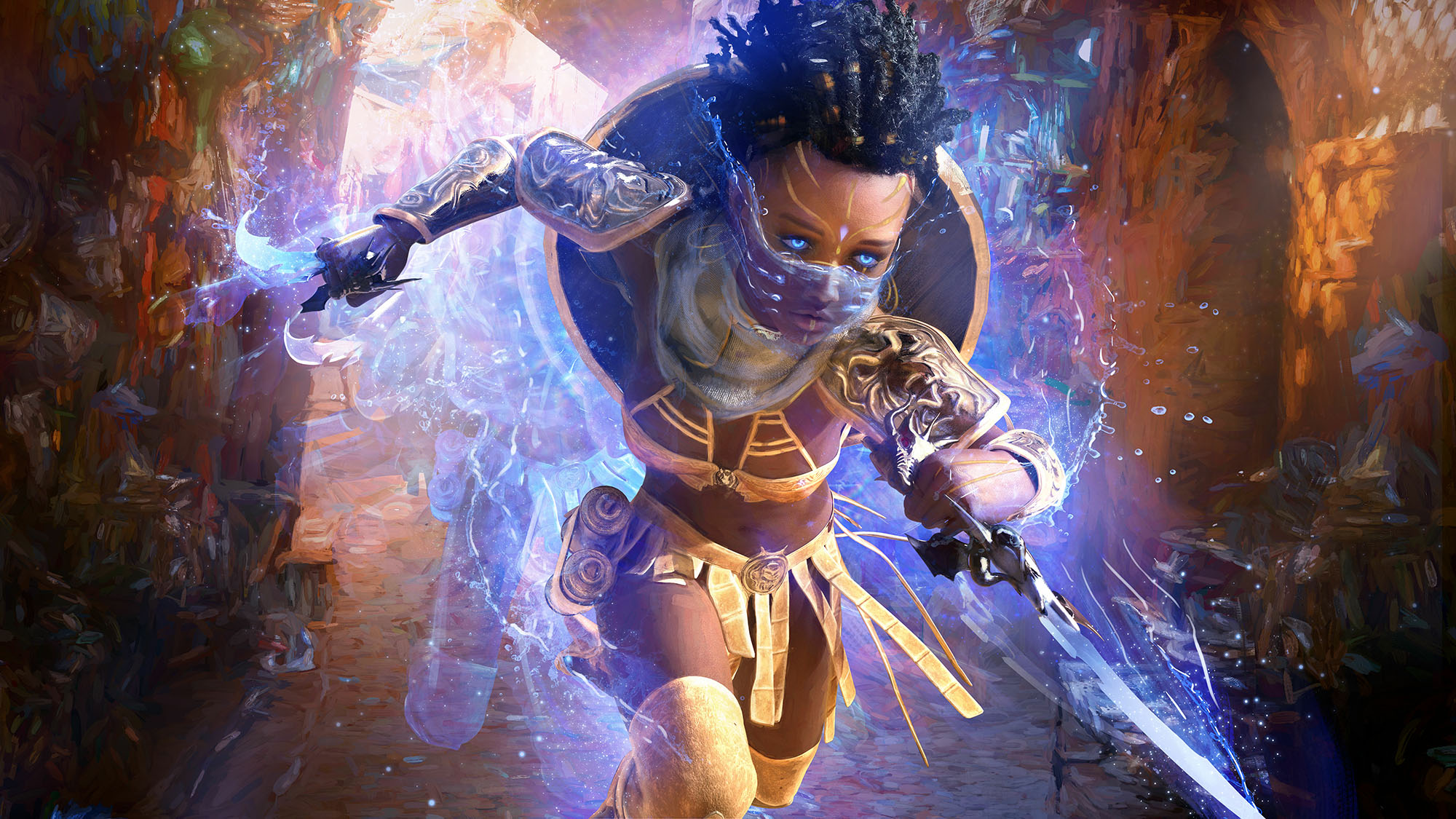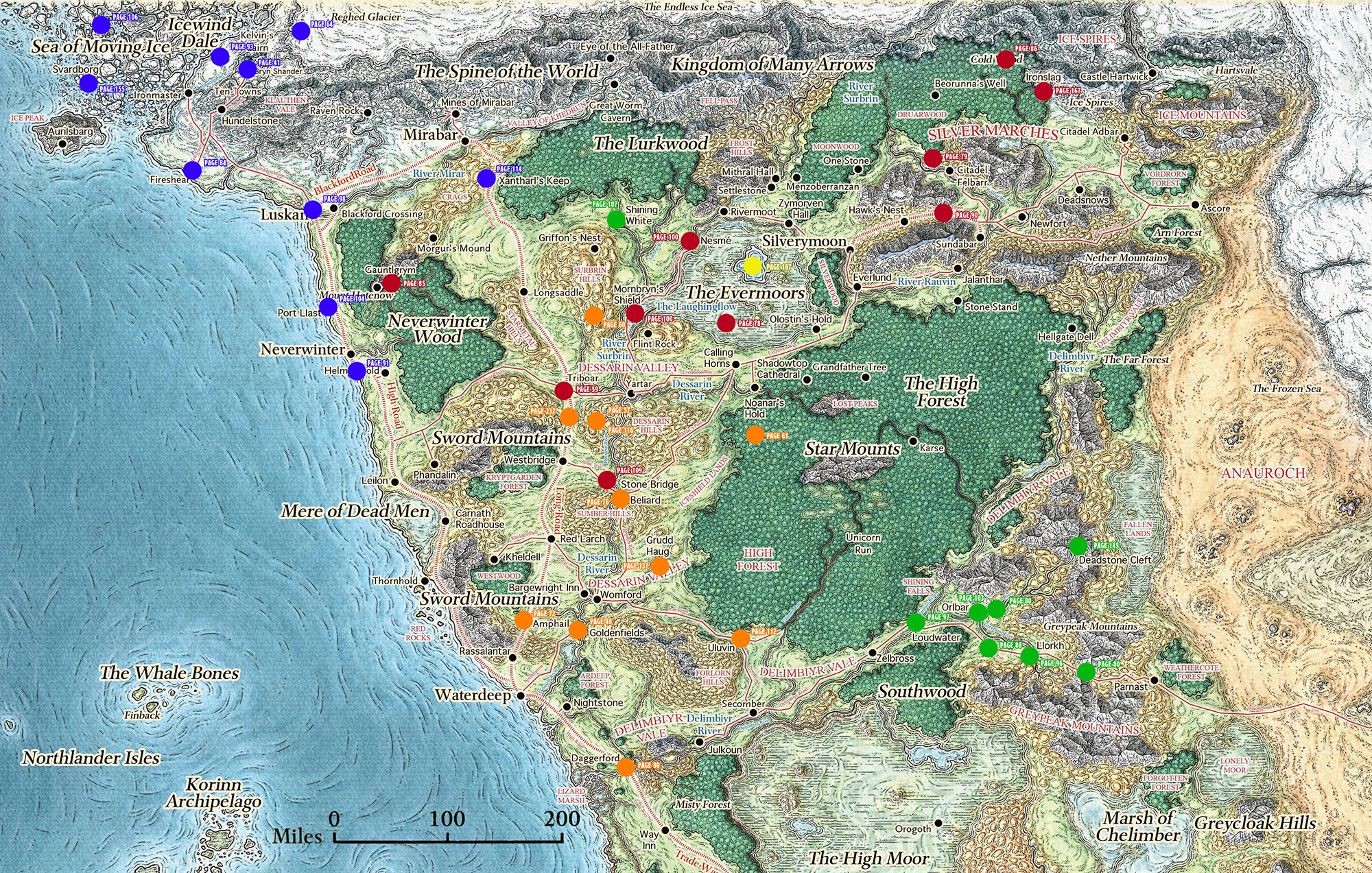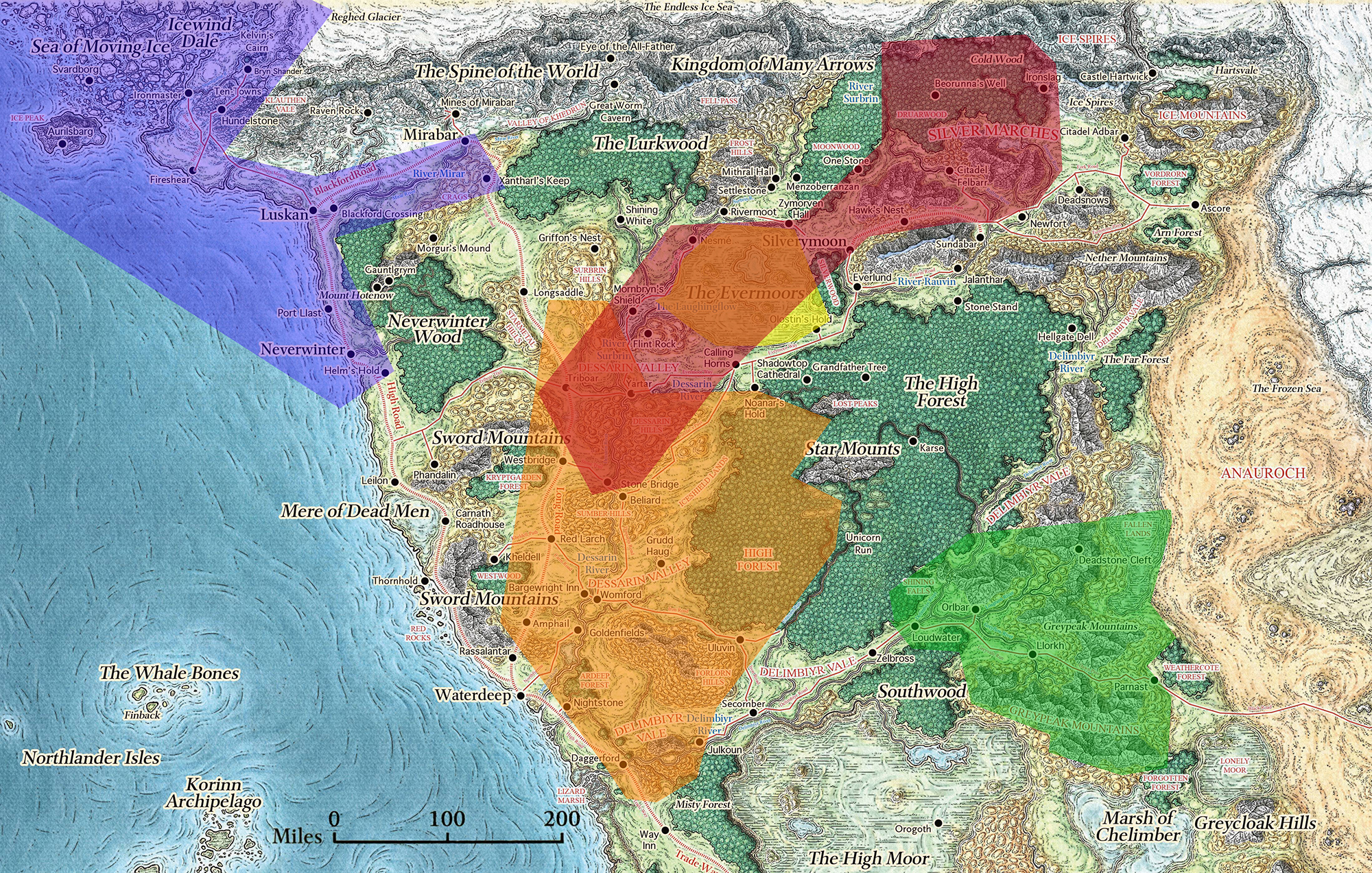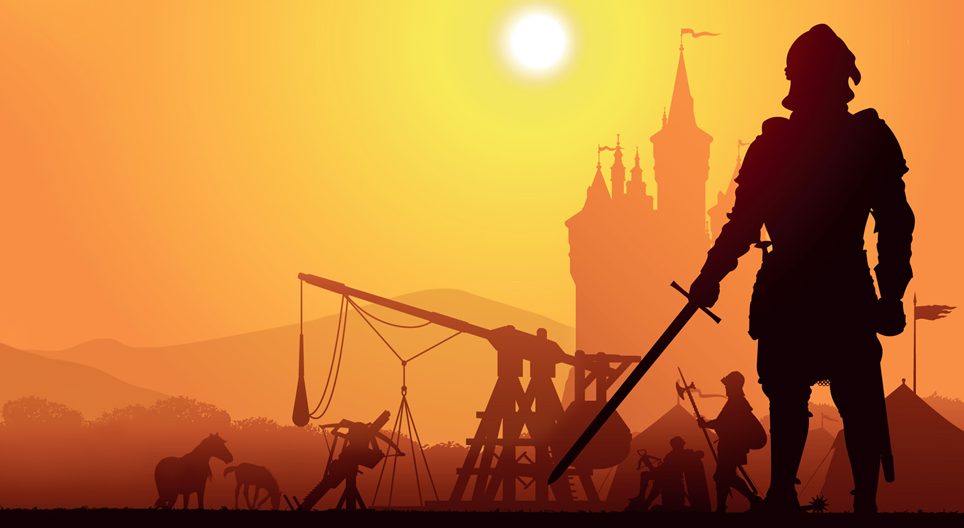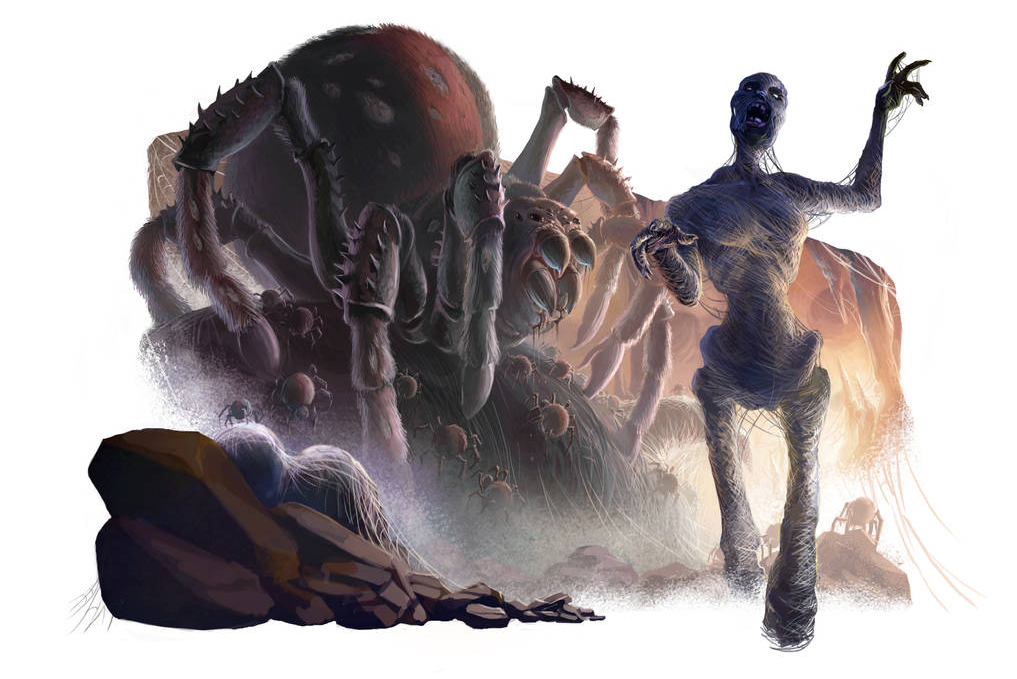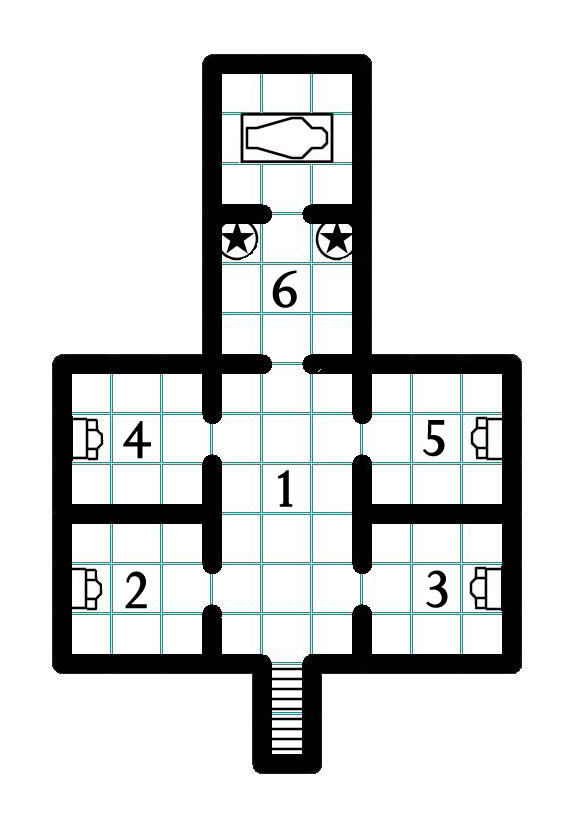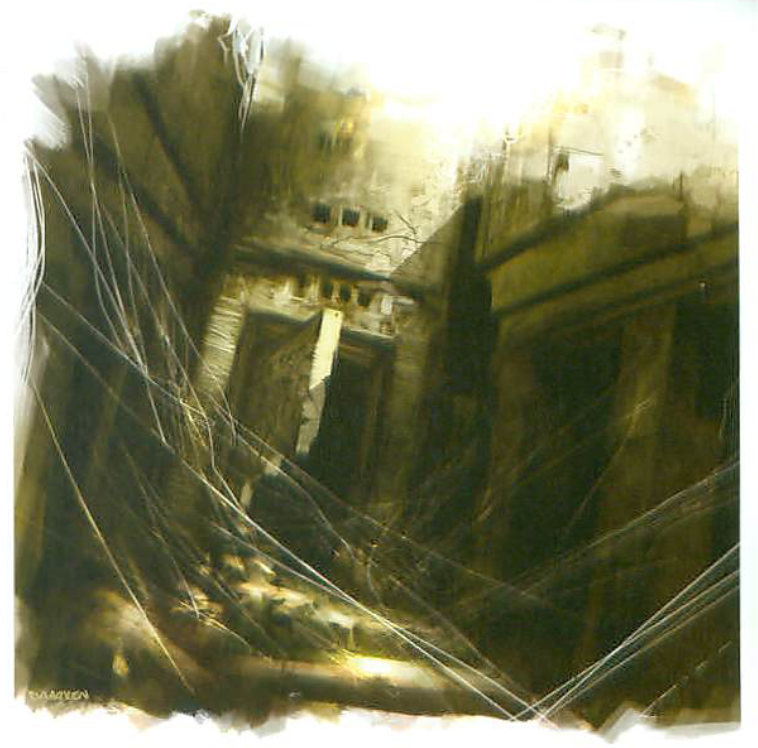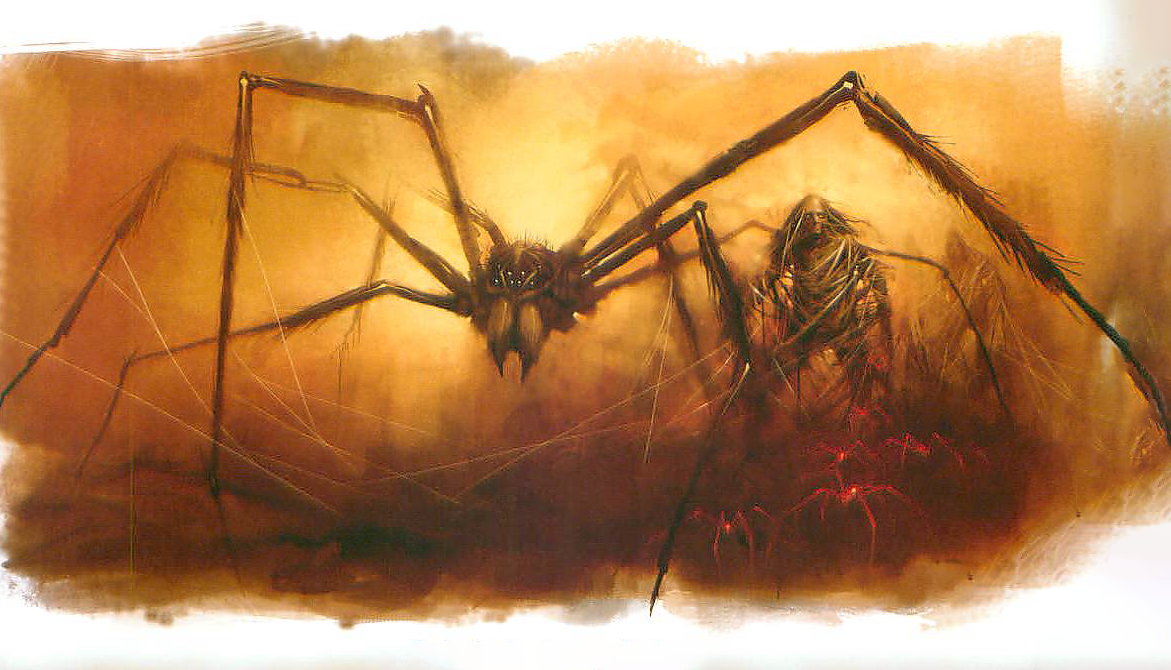How quickly can you complete a run of the Dragon Heist remix?
This is a question I get asked fairly frequently.
Personally, I like this campaign a lot, and I don’t recommend rushing it. One of the things that makes it special is how the PCs can become entwined in the fabric of the city — invested in Trollskull and its community; linked to friendly factions; becoming the nemeses of other factions. Weaving a campaign like that, though, takes time. You have to give yourself (and your players) the space to explore all of those threads. If you rush it, those connections will never get formed and will never have a chance to grow and interact with each other.
But, of course, there’s all kinds of reasons why you might need to speed things up: Maybe you want to run it for a D&D summer camp and you only have a limited amount of time. Or you’re midway through the campaign, a player is moving away, and you’d like to wrap things up before they leave.
Whatever the case may be, how can you make sure you reach the finish line before you run out of time?
HOW LONG IS THE REMIX?
Let’s start by establishing some baselines.
When I ran Dragon Heist, the campaign lasted for twenty-two sessions. Several of these sessions, however, were 8-hour marathons. Looking at my recordings, it appears that it took us approximately 120 hours to complete the campaign (as described in Dragon Heist: The Final Session), which would translate to roughly thirty 4-hour sessions.
I’ve talked with a number of DMs running the remix campaign, however, and its length can vary quite a bit: The longest I know of ran a 300-hour version of the campaign (with a lot of extra material). Most seem to cluster between 80 and 150 hours.
One of the biggest variables seems to be Chapter 2: From the time they get Trollskull Manor from Volo to the point where the fireball goes off and the next phase of the campaign begins is a very sandbox-y period. The PCs are repairing their inn, interacting with the NPCs of Trollskull Alley, meeting faction reps, dealing with Emmet Frewn, and going on faction missions. The number and detail of the faction missions, in particular, can vary a lot depending on how much interest the PCs have in the factions and how much effort the DM puts into the missions. The PCs might also be following up on questions they have from Chapter 1 (possibly getting a jump start on the Grand Game), and it’s also not unusual for DMs to add brand new adventures (like The Lady of Trollskull Priory, Blue Alley, The Veiled Society, or something of their own creation) here.
As a result, groups can easily spend dozens of hours in Chapter 2. I know of one group who spent over a year of biweekly sessions on just this one section of the campaign. (Personally, my group spent 20 hours here.)
On the other hand, it’s also quite trivial to speed run Chapter 2: You can skim past or even completely cut a lot of stuff here without fundamentally sabotaging the rest of the campaign. (The players will likely feel less connected to the city and the PCs will have fewer resources to call upon during the Grand Game, but these aren’t crippling problems.) I know of several groups who have rescued Floon & Renaer in one session and then triggered the fireball just one or two sessions later.
The other major variable, of course, is the heists. Each heist itself generally takes less than four hours and can be wrapped up in a single session, but you also need to consider the set-up (i.e., as described in Part 7 of the Remix, tracking faction activity to faction outposts, following the leads from the faction outposts back to the faction lairs, and planning the heist).
In practice, it looks like each heist will take 10-15 hours of playing time (including the heist itself). This generally won’t be sequential, though — i.e., 15 hours on one heist and then 15 hours on the next heist. Instead, the investigations and interactions with the various factions will weave around each other.
Although slightly different in form, this timeline also seems to roughly apply to the Gralhund Raid (with the setup time being spent on the fireball investigation). In practice, this might be a little quicker, but it’s close enough for our purposes.
Wrapping things up, Chapter 1 took my group about 5 hours to complete and the finale of the campaign after the PCs have reassembled the Stone of Golorr — i.e., breaching the vault, getting the gold, and then dealing with whatever the aftermath of getting the gold is — seems to take another 5-10 hours.
To sum that up with a conservative estimate:
- Chapter 1: 5 hours
- Chapter 2: 20 hours
- Gralhund Raid: 15 hours
- Heists: 15 hours x 4 heists
- The Vault: 10 hours
To this, you’ll probably want to add another 10-20 hours of miscellaneous activities. (In my campaign, that included a romance subplot, setting up an orphanage, and running additional faction missions after Chapter 2, among other things.)
So our baseline running time for the Dragon Heist remix is roughly 120 hours, or 30 four-hour sessions.
DRAGON HEIST: THE FAST VERSION
Now, let’s speed things up. For this discussion I’m going to refer to 4-hour sessions, but the advice should hold regardless (e.g., if you have 2-hour sessions, then when I say something should take one session, it should take you two sessions).
Chapter 1: Set a tight pace here to make sure you wrap this chapter up in a single session. To make this happen, you probably want to be exiting the Yawning Portal no later than the 45-minute mark in your first session. (You may need to skip the troll fight to make this happen.)
In this version of the campaign, the PCs will only be aligned with a single friendly faction. Pre-select that faction and use them as the contact who hooks the group up with Volo.
Chapter 2: You’ll also want to wrap this chapter up in a single session. For me, that probably looks like this:
- Hello urchins! (In the scene where the PCs arrive at Trollskull for the first time, introduce the urchins.)
- This Old Tavern (Establish a budget for repairs, then have one or two roleplaying interactions with guilds and/or people they’re trying to borrow money from. This will create a personal investment in Trollskull Manor.)
- Your Mission, Should You Choose to Accept It. (Have the friendly faction reconnect with the PCs and give them a single simple faction mission. This mission should be resolved in one scene.)
- Opening night! (Establish some of the neighborhood personalities.)
- Fireball! (End the session on a cliffhanger.)
Miscellaneous Activities: Eliminate as much of this stuff as possible. After Chapter 2, I’d recommend bringing in just one additional faction mission. Keep the Trollskull-related roleplaying to a minimum. If the PCs are getting distracted by non-essential activities, try to frame hard, resolve it quickly/decisively, and redirect them away from it.
Heists: Try to keep the faction investigations as tight as possible. Frame aggressively and don’t let the players dither too much in their planning. If they’re in any way confused or suffering analysis paralysis, bring in a faction response team with a bunch of explicit clues in their pockets. You don’t need to pare things down to the bone here; just keep it tight.
Vault Keys: For the finale, eliminate the vault keys. Once the PCs know where the Vault is, they can just go there and enter.
Doing all of this should result in a campaign that looks more like this:
- Chapter 1: 4 hours
- Chapter 2: 4 hours
- Gralhund Raid: 12 hours
- Heists: 12.5 hours x 4 heists
- The Vault: 5 hours
- Miscellaneous: 5 hours (including post-Vault epilogue)
So we can run a fast version of the Dragon Heist remix in roughly 80 hours, or 20 four-hour sessions.
DRAGON HEIST: THE SPEED RUN
But that’s not good enough! Suzie just got a new job in a different country and we need to wrap things up ASAP!
This is the point where we’re going to make some very deep cuts and even fundamentally alter the dynamic of the campaign.
Fast Version: Start, of course, by implementing everything from the fast version of the campaign described above.
Goodbye Gralhunds: We’re going to get rid of the Gralhunds by replacing them with the Cassalanters.
- The nimblewright who triggers the fireball belongs to the Cassalanters. (Which means, of course, that the fireball investigation leads directly to the Cassalanters.)
- The Cassalanters have the Stone + an Eye.
- To keep things simple, I recommend just having the Cassalanters live in the Gralhund Villa and using the Gralhund Raid as described in the Remix.
- I recommend simplifying things even further: The Cassalanters are not Asmodean cultists. (Whether you use the Gralhund Villa or Cassalanter Villa maps, this lets you eliminate the Asmodean temple. Their faction outposts will also not come into play in this version of the campaign.)
- You can still have the Cassalanters try to sell the PCs a sob story about their kids as their reason for doing all this. If you’ve decided that they’re not cultists themselves, then this is even more straightforward: Their kids really WERE cursed by cultists (or maybe it’s a legacy from an ancestor) and this is the only way the Cassalanters can save them.
Fast Heists: To speed up the heists as much as possible, we’re going to run each heist in a single session. This means that we need to eliminate the faction investigations and most or all of the groundwork. We have a couple options for this.
First, we can give the Cassalanters have much more actionable and comprehensive intelligence about the Grand Game: They know that Xanathar has one Eye and Manshoon the other. They also have blueprints and locations for both lairs.
The PCs can now go directly from the Cassalanter Raid to performing the other two heists back-to-back.
If the PCs miss the Cassalanters’ Grand Game report (and, therefore, all this heist-related intelligence they need), you can backstop this by having a friendly faction — e.g., Force Grey — sweep the Cassalanter Villa after the raid, discover the intel, and then bring it to the PCs.
Alternatively, you can use the PCs’ friendly faction to frame up these heists as faction mission assignments. I prefer the Cassalanter intel solution because it keeps the players in the driver’s seat of the campaign, but if all else fails having someone show up and say, “We know you’re looking for the Eyes, and we think we’ve identified the location for one of them…” will certainly cut to the chase.
Option – Simultaneous Heist: You could speed things up even more by having an allied faction do one of the two final Eye heists at the same time the PCs are doing the other. This could be the Cassalanters, if the PCs have decided to help them, or it should be whatever friendly faction the PCs have allied with.
Option — The Final Eye: Eliminate the final Eye Heist entirely by having the faction holding the Eye come to the PCs with the Eye to negotiate. They can make whatever offer seems reasonable and makes sense given the circumstances.
Whatever the offer may be, either:
- The PCs cut a deal, the Stone is reunited, and everybody heads to the Vault.
- The PCs double-cross the enemy faction and take the Eye without a heist.
- The NPCs try to double-cross the PCs, and then the PCs take the Eye after righteously thrashing the double-crossing knaves.
Mix-and-Match: You do not, of course, have to use all of these options at the same time. Depending on just how breakneck you need the pace to be, you can mix-and-match whichever options make the most sense.
If you were to use all of these options, however, your campaign would likely look something like this:
- Chapter 1: 4 hours
- Chapter 2: 4 hours
- Gralhund/Cassalanter Raid: 10 hours
- Optional – Sea Maidens Heist: 4 hours
- Eye Heist: 4 hours (including simultaneous heist or Final Eye negotiation)
- The Vault: 4 hours
- Miscellaneous: 2 hours
This gives you a lightning-fast 32 hour version of the Dragon Heist remix, which can be played in 8 four-hour sessions.
TRANSITIONING MID-CAMPAIGN
If you’re midway through a run of the Dragon Heist remix, there are any number of reasons why you might need to transition to a high-speed wrap-up. The options above should give you the tools to figure out how best to tighten things up and focus on what’s essential for a satisfying conclusion, but a lot of the specifics will depend on exactly what’s going on in your campaign.
For example, if you’re in the middle of Chapter 2, then it’s probably best to trigger the fireball at the beginning of your next session and then chart a course from there.
On the other hand, if you’re in the middle of the Eye heists and now running out of time, you might be best served considering an option like having a friendly faction run one of the remaining heists for the PCs. Or put a twist on that idea by having whichever faction the PCs are targeting next carry out a successful heist on one of the OTHER factions, resulting in them having two Eyes onsite when the PCs arrive.
Whatever form your campaign takes, I hope it has an epic conclusion for you and your players!

